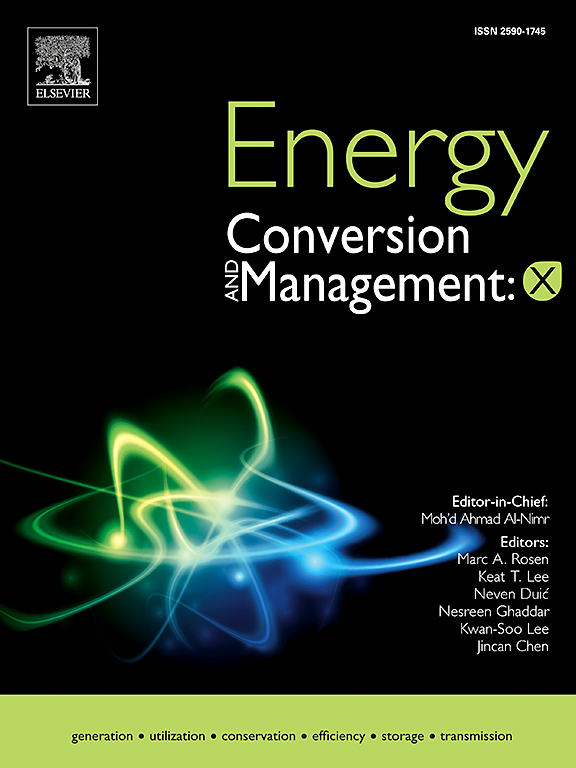PEM water electrolyzer modeling: Issues and reflections
IF 7.1
Q1 ENERGY & FUELS
引用次数: 0
Abstract
Nowadays, water electrolysis is widely recognized as a crucial step in the transition towards a hydrogen-based economy. Several technologies are available for water electrolysis, and polymer electrolyte membrane (PEM) water electrolyzer offers numerous benefits such as high efficiency, quick response to fluctuations in renewable energy sources, capability to function under high pressure, modular design, ability to handle high current density, and production of high-purity hydrogen with minimal water usage. Numerous modeling methods have been developed in the research literature to describe the operation and performance of PEM electroyzers. Each model has its own advantages and limitations, and is only valid under certain assumptions and running conditions. This article aims to provide an in-depth review of the main factors affecting the performance of PEM technology, as well as provides a comprehensive analysis of PEM system modeling, covering different thermodynamic, electrochemical, energy, momentum, and mass models, and finishing with the physical modeling challenges for PEM technology.
PEM 水电解槽建模:问题与思考
如今,人们普遍认为水电解是向氢基经济过渡的关键一步。目前有多种水电解技术,其中聚合物电解质膜(PEM)水电解槽具有多种优点,如效率高、对可再生能源的波动反应迅速、能在高压下工作、模块化设计、能处理高电流密度,以及能以最少的用水量生产高纯度氢。研究文献中已经开发了许多建模方法来描述 PEM 电解槽的运行和性能。每种模型都有其自身的优势和局限性,而且只在特定假设和运行条件下有效。本文旨在深入评述影响 PEM 技术性能的主要因素,并对 PEM 系统建模进行全面分析,涵盖不同的热力学、电化学、能量、动量和质量模型,最后介绍 PEM 技术面临的物理建模挑战。
本文章由计算机程序翻译,如有差异,请以英文原文为准。
求助全文
约1分钟内获得全文
求助全文
来源期刊

Energy Conversion and Management-X
Multiple-
CiteScore
8.80
自引率
3.20%
发文量
180
审稿时长
58 days
期刊介绍:
Energy Conversion and Management: X is the open access extension of the reputable journal Energy Conversion and Management, serving as a platform for interdisciplinary research on a wide array of critical energy subjects. The journal is dedicated to publishing original contributions and in-depth technical review articles that present groundbreaking research on topics spanning energy generation, utilization, conversion, storage, transmission, conservation, management, and sustainability.
The scope of Energy Conversion and Management: X encompasses various forms of energy, including mechanical, thermal, nuclear, chemical, electromagnetic, magnetic, and electric energy. It addresses all known energy resources, highlighting both conventional sources like fossil fuels and nuclear power, as well as renewable resources such as solar, biomass, hydro, wind, geothermal, and ocean energy.
 求助内容:
求助内容: 应助结果提醒方式:
应助结果提醒方式:


